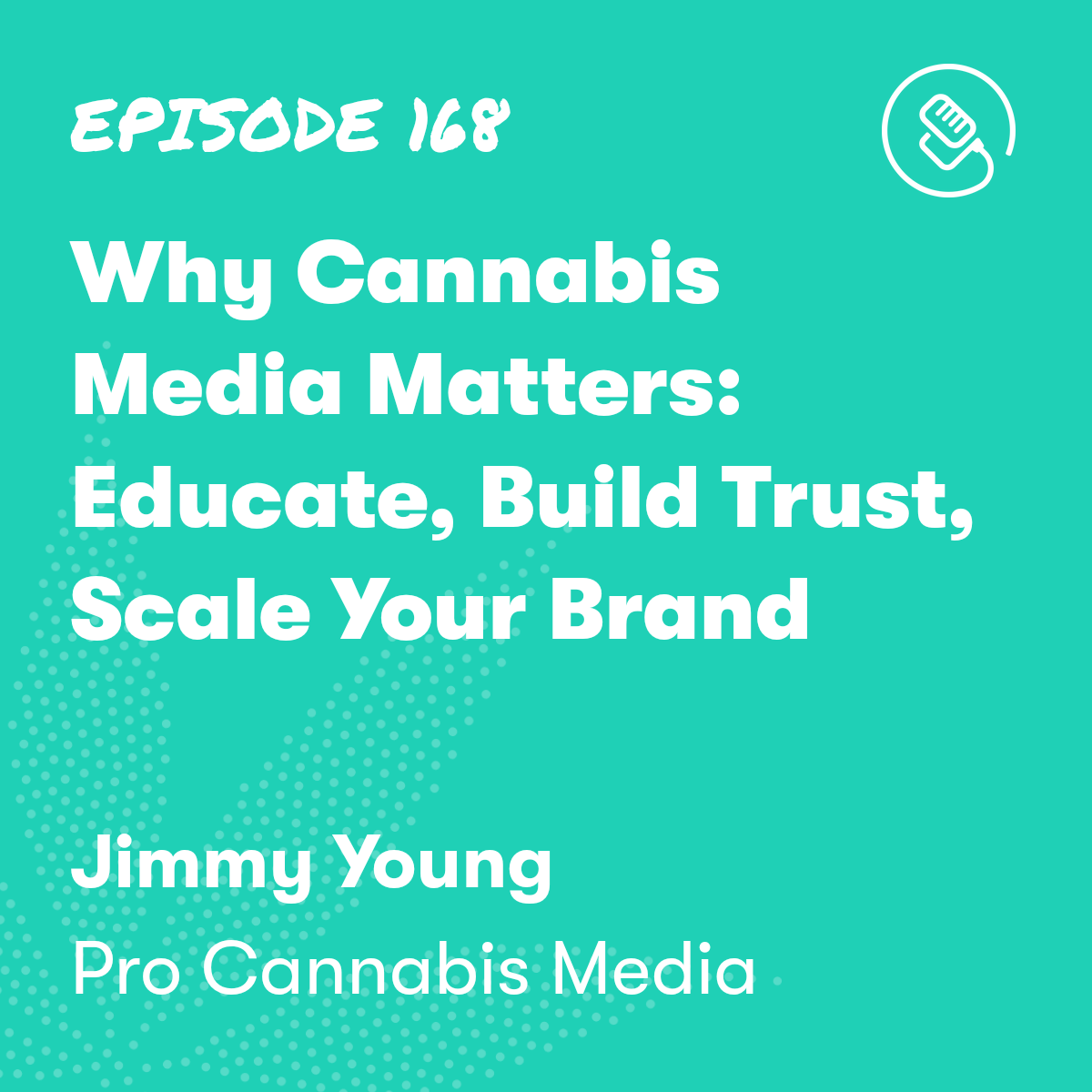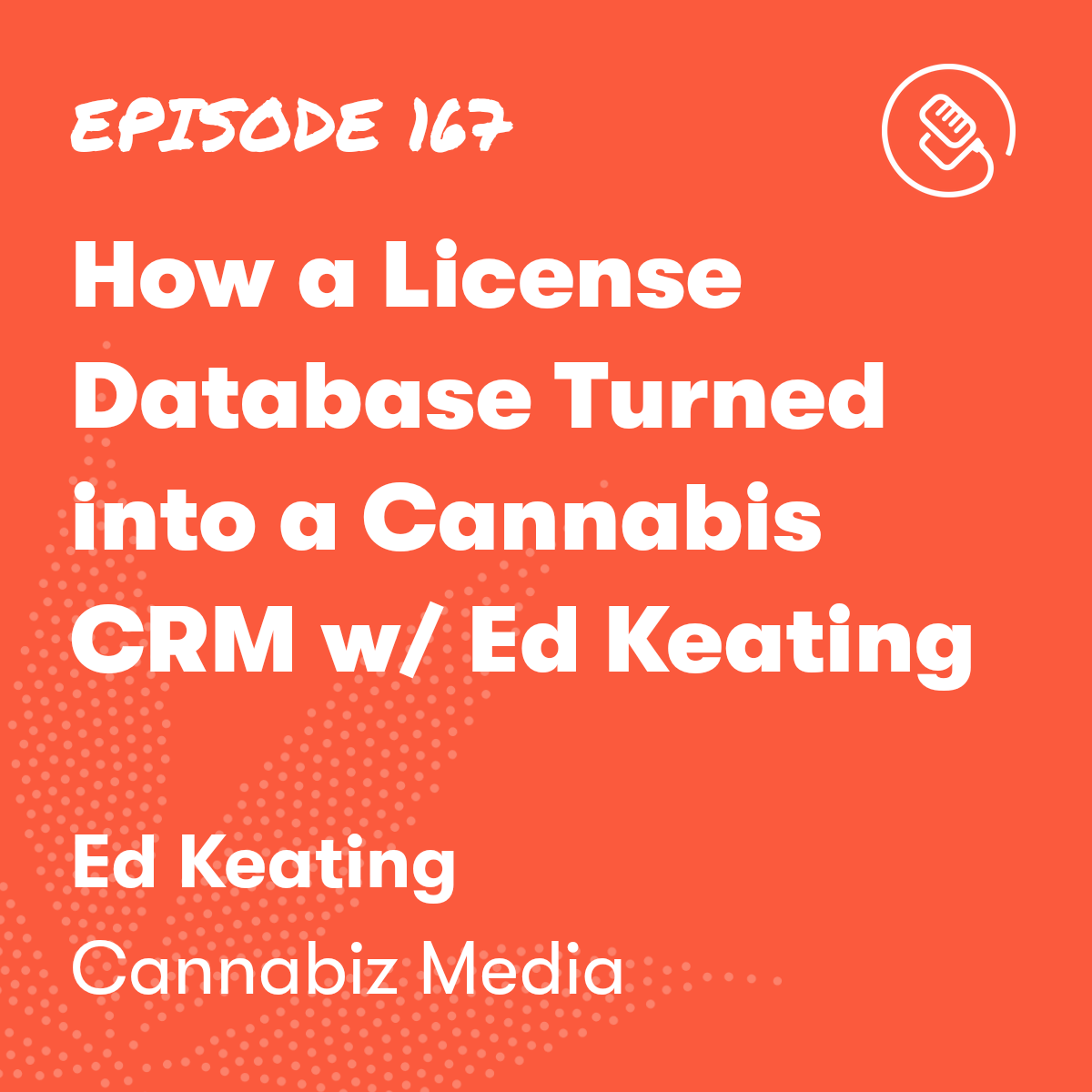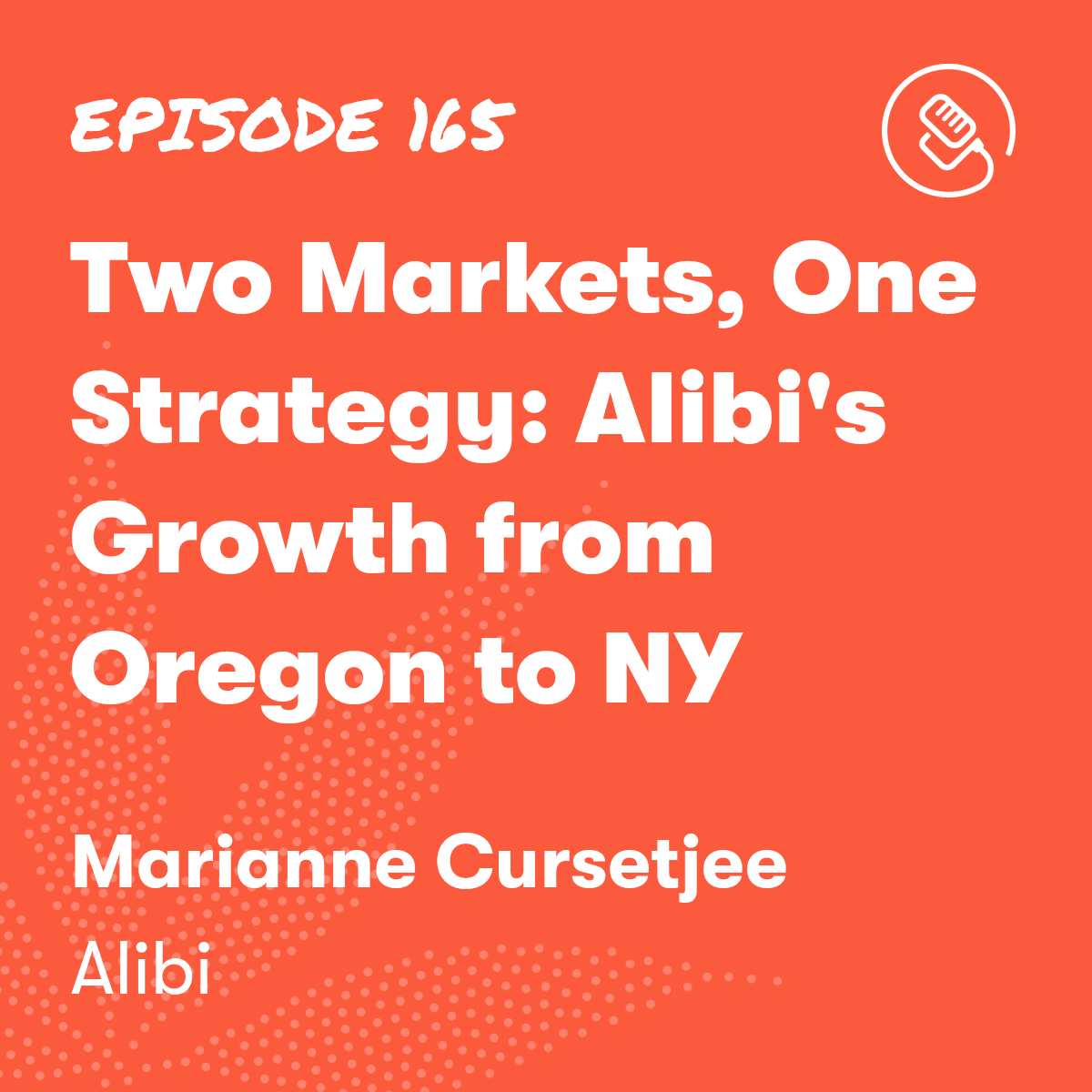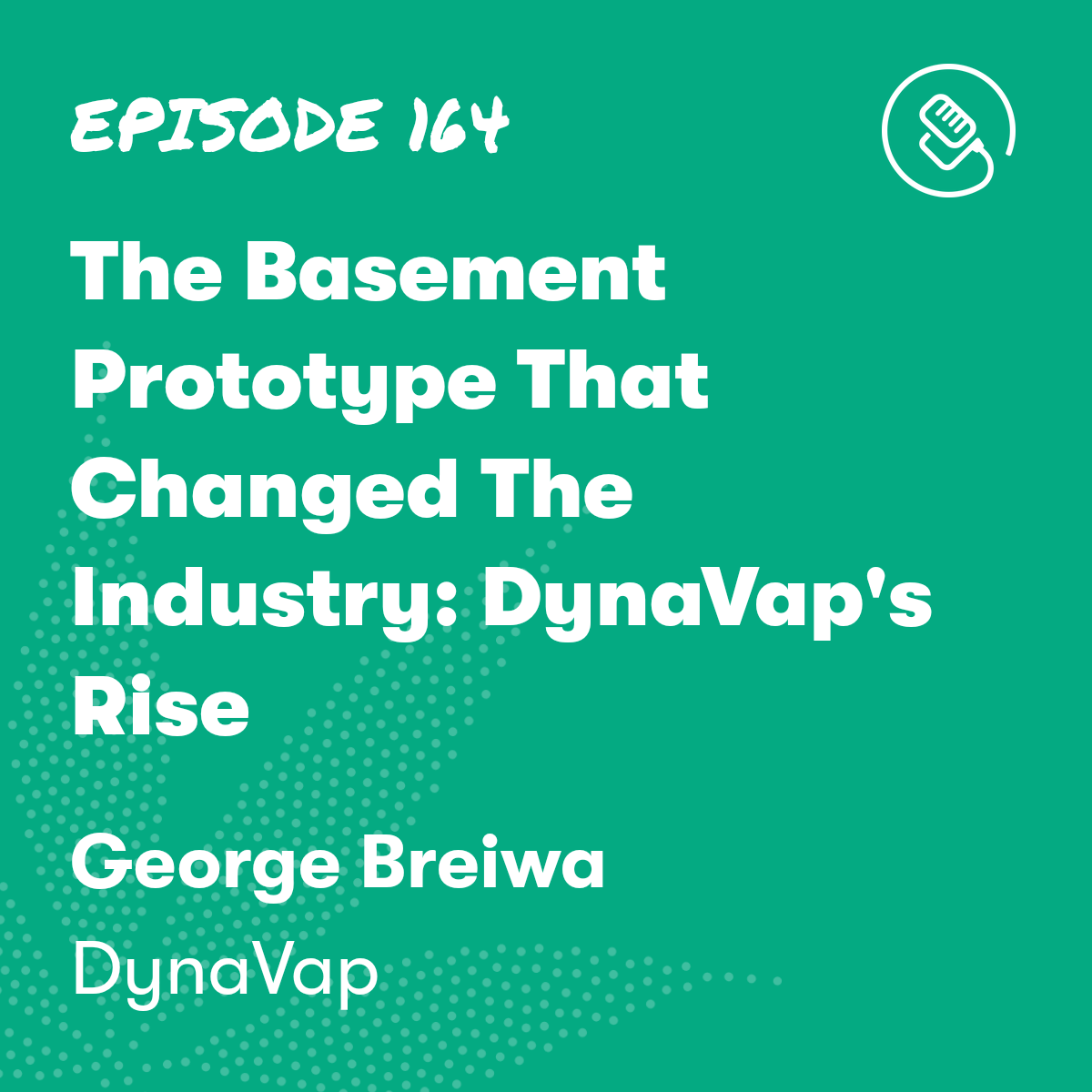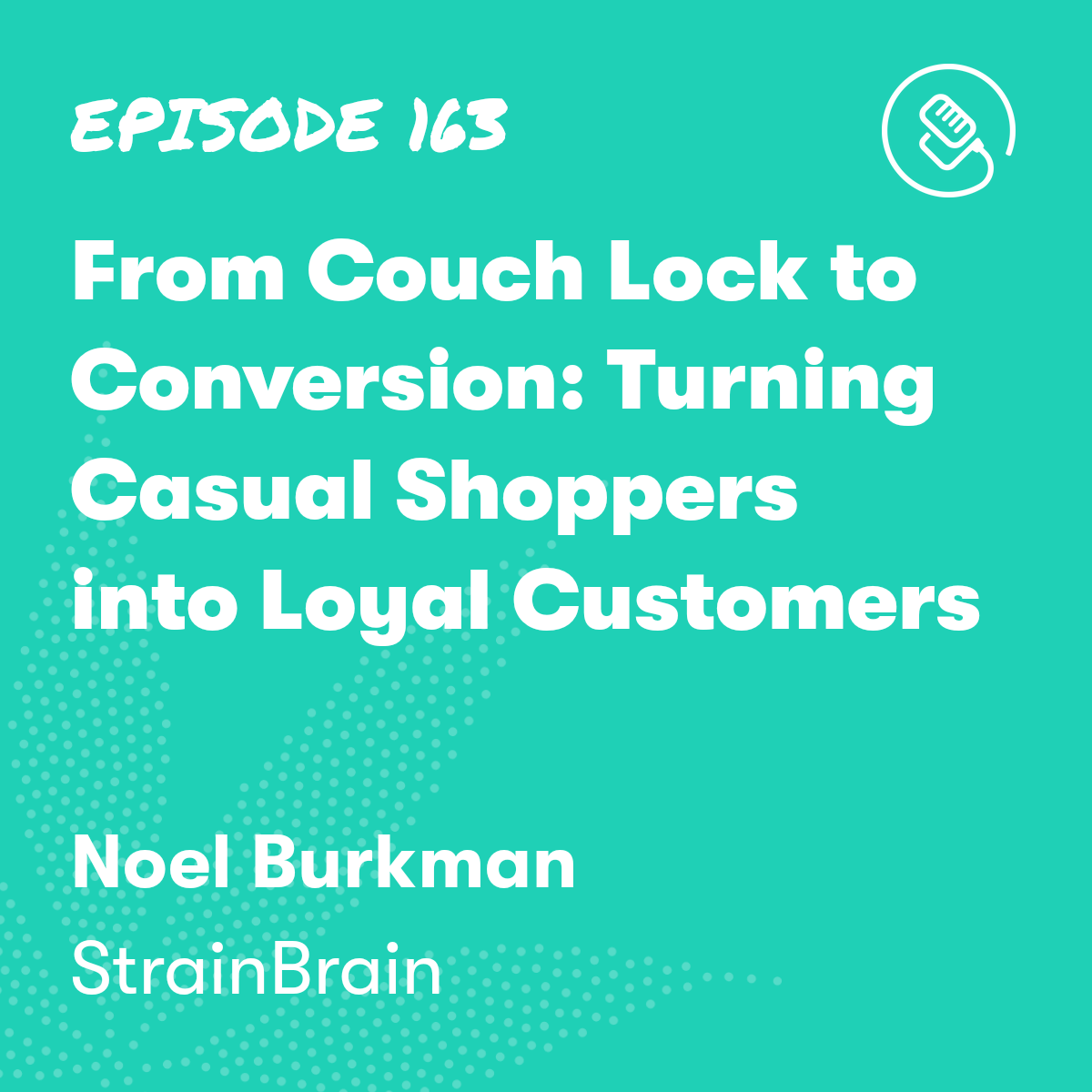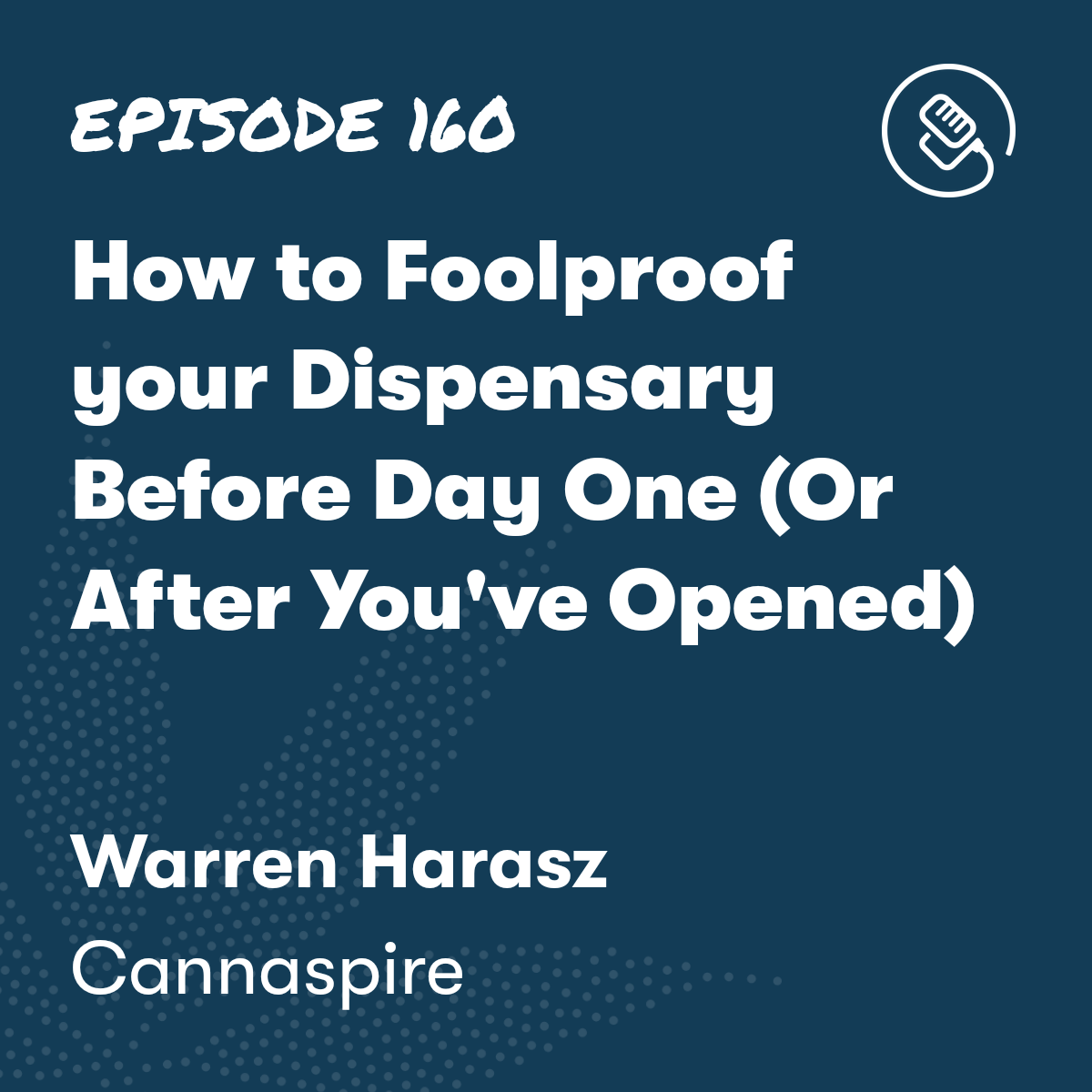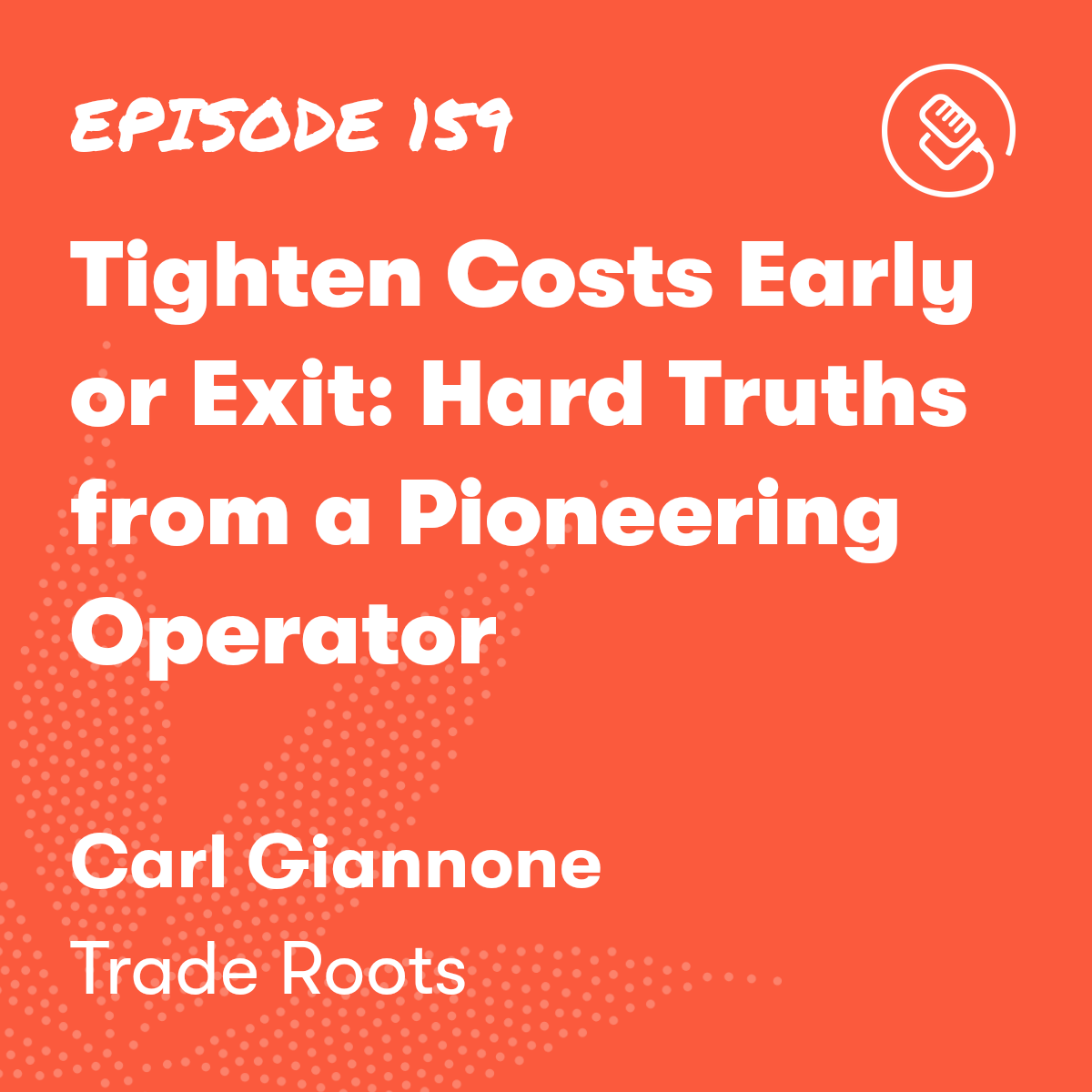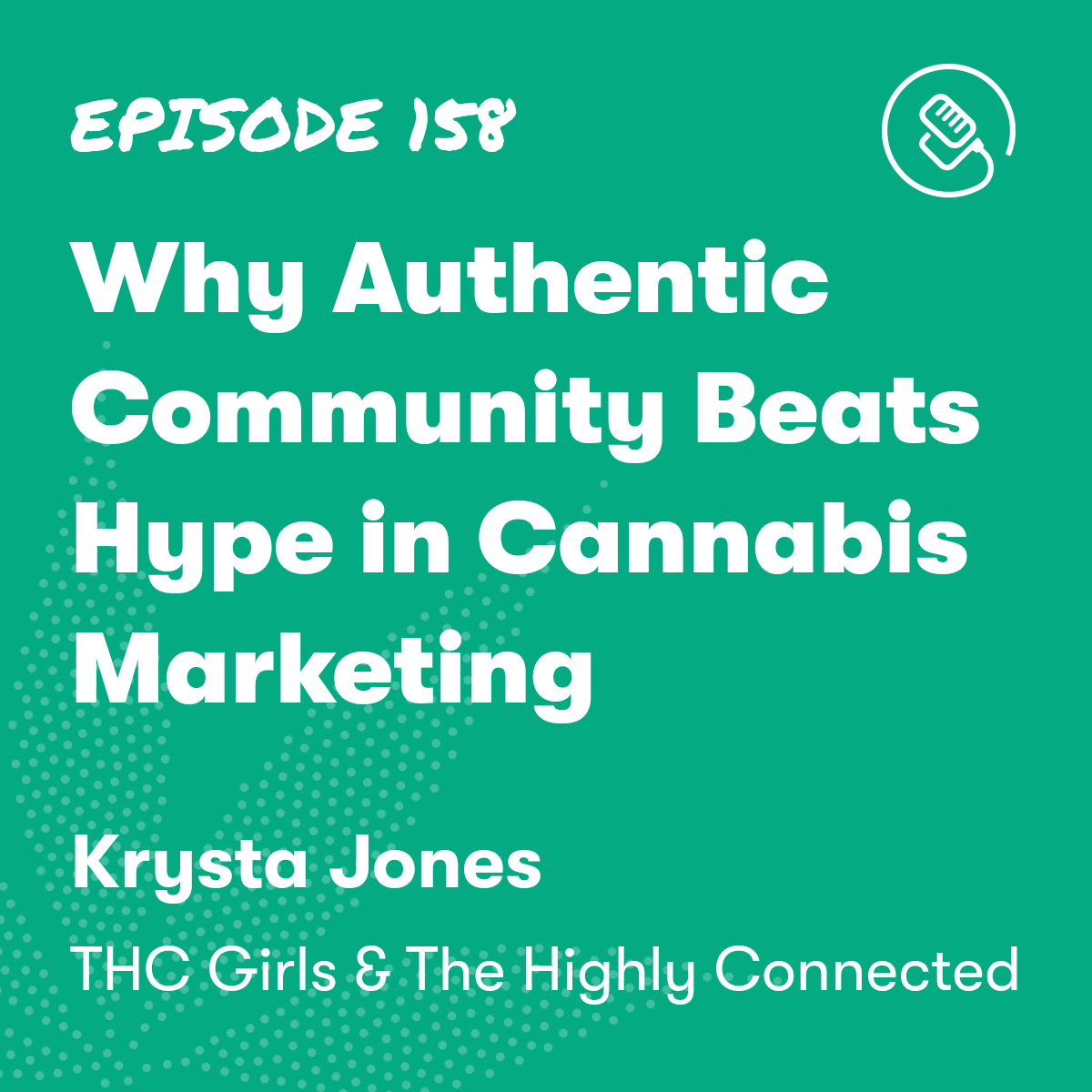

The Four Fundamental Pillars of Employee Retention
Episode Description

Episode Transcript
Jessica Cranney: Those aren't the, the reasons that people get up and come to work. They will pack their own lunch, they will wear whatever the hell you want them to wear.
They, they will work from wherever you want them to work if they feel like you are in it with them and that we're all in this together.
Tom Mulhern: Today I am continuing my conversation with Jessica Cranney, the managing partner at GRN Mile High, and Jessica's gonna dive into the four pillars of retention, which are onboarding, creating that consistent experience when people come into your company, whether they're a budtender or a C E O, creating an experience that people feel a part of your community performance management leading by
having a, a relationship with your team and making sure that people are hitting those performance management goals. And then she also talks about consistent communication and offboarding, celebrating people as they grow and move and go into different careers.
Your goal as a leader should be to help your team succeed. So I hope you enjoy this bonus conversation with Jessica Cranney.
Tom Mulhern: What are the best employee retention initiatives or strategies that you guys put in when you work with the clients that you're working with?
Jessica Cranney: So truly Tom, there are four key elements or what will call touchpoints that drive employee engagement. And they, they are woven through recruit, train, and retain. But the four pillars.
The first one is onboarding. When you do attract that high performing leader, when you do recruit them, what do you do to, to make sure they succeed from day one?
Do they get a shirt and a swag bag and a hand sign letter from every leader in the organization that says, Hey, you're important. We're so glad you're here, is like, Hey, welcome. Here's your key card badge. Put it on your lanyard. Right? And, and that, that should be for every employee, whether you're a bud tender or not.
And I'm not saying it has to be a t-shirt for everybody. Is there a lapel pin? Is there a handwritten card goes a really long way, right? Or, or do we have you know, for onboarding 10 new people in the production facility today, does the director of the facility bring in a traveler of coffee and just kind of host an informal on the clock, 15 minute, get to know the new person.
Then the second one is, what's your ongoing engagement and communication? How do you make them feel like they're a part of something bigger? And one of the things that we recommend, and I will admit that I, I get eye rolls from this, but you cannot deny the roi.
If you think back in the day to high school and Spirit week wacky Stock Wednesday and Twin Tuesday, and we recommended and we implement quarterly spirit weeks that span across the co the company. So it's not just retail, it is retail and production. And we put a theme that the entire company can participate and it's all voluntary.
But again, Monday might be Rockstar Monday and you wear your favorite rock shirt and Twin day Tuesday and Wacky Sock Wednesday, and Jerseys on Thursday, whatever. the whole company can participate in that. If you guys are on social media or LinkedIn, you can take pictures and tag and the Broadway store is, this is their wacky socks.
And look at the metro store and their wacky socks. So you do that just as a fun unification, right? And then somebody in marketing is sending out a daily recap of the best pictures or what have you. But Tom, we don't just do it for feel good, we tie business metrics to it as well. And so if you're in retail, there would be you know, munchy Monday.
And for every edible that a, bud tender would sell, they get a raffle ticket in a store jar. And on Tuesdays maybe it's tincture, and on Wednesday it's wax and what have you. But you associate raffle tickets or a daily prize, or the, the store that does the best in each of these categories gets a pizza party at the end of the week.
You do the same thing in production, right? Most trims, most ways, most packaging, most. What have you. So you are tying it to production, but it's also a way just to unify and feel good. And we recommend that corporations do that quarterly that that becomes part of your cultural cadence. That is a signature move.
Cuz one of my favorite things that I hear from clients and candidates is culture is critical. And I don't disagree. But what happens next is when I say, tell me more, unpack that, what does that look like, sound like, feel like if you're an employee or a consumer.
And for, frankly, Tom, I'm often met with like pretty snooze worthy responses. It's like, oh, well you get pizza on Friday and we do end of year bonuses and you can work from home one day a week. Like, those aren't the, the reasons that people get up and come to work. They will pack their own lunch, they will wear whatever the hell you want them to wear.
They, they will work from wherever you want them to work if they feel like you are in it with them and that we're all in this together. And so the spirit week is one of those, you know, we say do this quarterly and have a, a, a team, you know, zoom webinar twice per year, that leadership posts so that you're connected to folks, but like, how do yougo your engagement and communication with your team so that it doesn't feel siloed.
The third one is performance management. I think people hear performance management and think I'm running around with like a spiked bat bludgeoning people over the head if they don't perform. I don't. And I'm very much one of those people who says, we, we lead with recognition first.
And I'm all about like, tell me what you need to succeed and we'll go and do that. But if we do it for four, six weeks and we're not seeing that return on the investment, I have earned the right to pump the brakes on the fun bus. I let you do it your way. We didn't deliver. Now that changes. But my point is we start with recognition and then we build in accountability.
But at the end of the day, the premise of that is, is consistency. There will be a monthly email or call that talks about the top store, the top 10 bud tenders and the top production people. We do that every month. Right. We have those accountability conversations behind closed doors.
But when we have those accountability conversations, which we train people how to have, we've earned the right to have accountability conversations because we've acknowledged when they do things right, we've engaged, we've allowed them as much opportunity to have a say in how we do this. I'm gonna bring you to the trough.
I'm gonna let you fill it with whatever kind of water you want. You want cherry flavored water, you want glitter in the water, you fill your own dang trough. But we gotta do things differently. And if you don't, that's gonna get more uncomfortable. But performance management is critical, but it should start with recognition before it goes into accountability.
However, there should be consistent standards for both. We high five you and patch you on the back and add a girl, add a boy at the end of the month for the same consistent things. We will have a conversation with people who perform below these standard operating performance measures.
And the fourth one is offboarding. And I'm not saying that every off board should go out with like a national parade. And Right, yes. You certainly treat somebody differently if they're retiring after three years or what have you, versus somebody who's maybe being terminated cuz they haven't shown up to work in three weeks. I absolutely, I am not saying that everybody deserves confetti and you know, a celebration.
However, I think that offboarding should be treated with the same respect as onboarding. Whether that means exit interviews, regardless of the circumstances of the employee's exit voluntary or involuntary, they are owed an opportunity to at least be documented with their, we have our side, they have their side.
We send them a thank you email, whether they come back to select to pick up their last check or we end up having to mail it to 'em cuz they just fell off the face of the earth. We have their last address on file. We have their email, we send a thank you. Sorry, things didn't go very well. We appreciate the time and the service that you gave us.
We wish you well in your future endeavors, but you know, we take the high road and I think that's one of the things that, even in my office, I've trained my team is recruiters. Most of my team doesn't do the training and development and retention side. They just recruit. And most recruiters have a terrible reputation for responding.
They are trained. They're, I, I bludgeon that into their heads. We will reply to everybody, clients, candidates, whether we like 'em, whether we don't, whether it's a good fit, what have you. We will reply. And so I think that if you open somebody's employment relationship with you, with such a fanfare and and respect, and you consistently do that through engagement and communication, you consistently do that through performance management.
Then not only do you owe it to your employee, again, regardless of the circumstances of their departure, but you owe it to your, your company's reputation to see that all the way through. And so those are the four critical places that, that we create. Signature moves and cultural cadences, onboarding, consistent engagement and communication, performance management and offboarding.
Tom Mulhern: how do companies start implementing that? Because that's, that really is a shift. That would be a shift for a lot of companies, like thinking from when we onboard to offboarding and in between. How do, how do people get started doing this?
Because I know that even when you're talking, I think about Kaya Push, and I'm like, yeah, yeah. Like it's checking the boxes. So it's built into everything we do as a company. But what about those companies that this is a brand new concept to them?
Jessica Cranney: It's very easy to hear me speak or to look at this on a PowerPoint slide and say, check, check, check. What's not easy is to commit to it. And how you do that is one, you start by having a meeting of all necessary stakeholders, right?
Where are we at? Where do we want to be and what's the gap? Because some people might look at this, they might look at my framework and say, yeah, we have that. Yeah, we have that, but we have no idea where to even start with this. Okay? Then keep those two out and let's have a meeting with the stakeholders that, that have to be a part of this section, have the stakeholder meeting, have an agreement, and then we build what we call, I usually use a Gantt Chart when I'm working through folks, like what's step one? What do we need to get that done? We need sign off from all of the stakeholders. Okay, cool. Two, we need to develop the communication plan. Okay, great. And really what the action plan is, is what do we want to do when or how often do we have, do we want to do it?
And who owns it? The fourth part of that is who's inspecting it?
And, and how are we accountable to that? Right.Does the person or groups who are inspecting it do a quarterly readout? You know, there's a few different ways that you guys can structure this. You can structure it by department.
The finance team's gonna do their own stuff and they're just gonna report out on their operating rhythm. But maybe everybody in the company's gonna get the spirit week, but the finance team's gonna do their own thing. The marketing team's gonna do their own thing, cuz well, the sales team's huge and the marketing team's three people big.
So you, you allow for some structure and flexibility. The other thing you do is you break up those four pillars of retention, onboarding, engagement, communication, performance management, and offboarding. And you assign different people from different departments to those. And then it's like, hey, well we add three people on the onboarding team, three people on this team, this team, and this team.
Here's what we decided we're gonna do for onboarding. And everybody gets to kind of participate and engage. And again, somebody's gonna own it and somebody's gonna inspect it. So there will be some follow up to keep it alive. Now, ultimately, if it's, if it's not kept alive, you will see that. And I will tell you guys candidly, The the worst thing you could do, if this is worse than doing nothing, the worst thing you could do is start something and not bring it to life.
All you, you have lost all credibility with any employee at, at the mid senior leadership level and below. You said you were gonna do something and you didn't. Why do I have to deliver when you ask me for something? So it is better to do nothing than to do something halfway.
Tom Mulhern: Now those four pillars can really help your business grow and scale and, and become something new, a culture where people wanna be around and want to stick around from the very beginning to when they move on to the next role in their life. And so if you are able to build these four pillars central to, to your business, I promise you that you will grow.
You'll scale. If your dream is to have multiple locations, building this into the first location will allow you to really scale that to multiple locations. So Jessica, thank you so much for your insights, for your thoughts, for your, your pillars,
Man, it was, it was such a great conversation.
And I also wanna just remind you, make sure that you go and nominate the Kaya Cast for Cannabis Podcasts of the Year. This would really help us share what we're doing here with more people. The nominations close at the end of July.
So we need you to go head over to the link in the bio, click that nominate us, nominate your favorite cannabis business, and let's grow together. Let's scale together. Let's, let's make this industry something that other industries are jealous of, of how much fun we're having, but also how much we are growing together.
So have a great, fantastic week and thanks again for listening to the Kaya Cast podcast.

